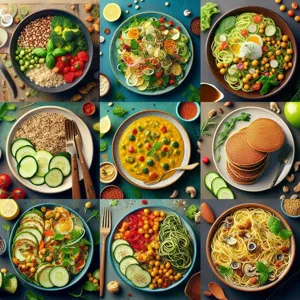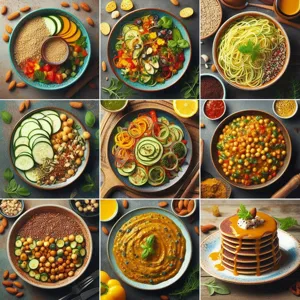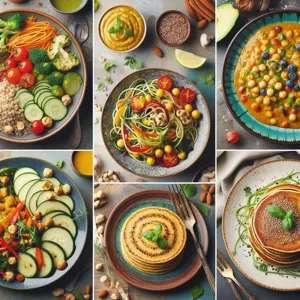In the ever-evolving landscape of gaming, the allure of free-to-play titles has captured the hearts of players around the globe.
With endless options available, it can be challenging to sift through the noise and discover the gems that truly deserve your attention. Whether you’re a casual gamer looking for a quick escape or a dedicated player seeking a new obsession, this curated list of top free-to-play PC games is sure to ignite your passion for gaming without putting a dent in your wallet. From thrilling battle royales and strategic MOBAs to immersive RPGs that whisk you away to fantastical worlds, each game offers a unique experience that you simply can’t afford to miss. Join us as we explore the best free-to-play titles that promise hours of entertainment, captivating gameplay, and vibrant communities waiting for you to join. Get ready to dive in and discover your next favorite game!
1. Introduction to Free-to-Play Gaming

In recent years, the landscape of gaming has transformed dramatically, with free-to-play (F2P) titles emerging as some of the most popular and engaging options available to players. Gone are the days when gamers had to shell out hefty sums for a single title. Today, a myriad of high-quality games can be accessed without spending a dime, revolutionizing how we approach gaming and making it more inclusive than ever.
Free-to-play gaming offers a unique appeal: it allows players to dive into expansive worlds, engage in thrilling battles, and connect with friends without the initial financial commitment. These games often employ a freemium model, where the core experience is available for free, but players have the option to purchase cosmetic upgrades, character skins, or other in-game items. This model not only keeps the games accessible but also enables developers to continually update and expand their titles, providing fresh content and experiences for their communities.
As the F2P market has evolved, so too have the quality and complexity of these games. Many F2P titles now rival traditional pay-to-play games in terms of graphics, gameplay mechanics, and player engagement. This shift has led to a vibrant ecosystem where players can enjoy a wide variety of genres, from battle royales and MOBAs to MMOs and puzzle games, all at no cost.
In this blog post, we’ll explore some of the top free-to-play PC games that you simply can’t afford to miss. Whether you’re a seasoned gamer or just starting your journey, there’s something for everyone in this diverse selection of titles. So, grab your mouse and keyboard, and let’s dive into the exciting world of free-to-play gaming!
2. Criteria for Selection: What Makes a Game Unmissable?
When it comes to selecting the top free-to-play PC games that truly stand out, several key criteria come into play. The first and foremost is **gameplay quality**. An unmissable game must offer an engaging, polished experience that captivates players from the moment they dive in. This means intuitive controls, balanced mechanics, and immersive worlds that encourage exploration and experimentation.
Next, we look at **community support**. A thriving player base can significantly enhance a game’s longevity and enjoyment. Games that foster a strong, positive community, whether through cooperative gameplay, in-game events, or forums, create an environment where players feel connected and invested in their experiences. Multiplayer features, competitive modes, and social elements are vital components that can elevate a game from good to great.
**Innovation** also plays a crucial role in our selection process. Free-to-play games that break the mold, whether through unique storytelling, inventive mechanics, or fresh approaches to classic genres, are the ones that leave a lasting impression. We prioritize titles that take risks and offer something genuinely new, as these are the games that keep players coming back for more.
Of course, **monetization practices** cannot be overlooked. The best free-to-play games strike a balance between offering enticing in-game purchases and ensuring that the core gameplay experience remains enjoyable for all players, regardless of whether they choose to spend money. Games that are transparent about their monetization strategies and avoid pay-to-win models consistently earn our respect.
Lastly, **regular updates and developer engagement** are essential factors. Games that receive frequent content updates, patches, and new features keep the experience fresh and exciting. When developers actively listen to the community and respond to feedback, it fosters trust and loyalty, making players feel valued.
In summary, the unmissable free-to-play PC games we celebrate are those that excel in gameplay quality, cultivate vibrant communities, innovate within their genres, employ fair monetization practices, and maintain a commitment to ongoing improvement. With these criteria in mind, let’s explore the titles that have captured the hearts of gamers everywhere!
3. Action-Packed Adventures: Top Picks

When it comes to action-packed adventures, free-to-play PC games have an incredible array of options that deliver adrenaline-pumping excitement without costing a dime. These games not only captivate players with their stunning graphics and immersive worlds but also offer exhilarating gameplay that keeps you coming back for more.
One standout title is **Warframe**, a cooperative third-person shooter that combines fast-paced combat with a deep sci-fi narrative. Players take on the role of ancient warriors known as Tenno, navigating through beautifully designed environments while wielding a customizable arsenal of weapons and abilities. The fluid movement mechanics, including wall-running and parkour, create an exhilarating experience as you dash through missions, battling enemies and completing objectives alongside friends or solo.
Another must-try is **Apex Legends**. This battle royale game redefines the genre with its unique character system and strategic gameplay. Players choose from a roster of Legends, each with their own special abilities, making teamwork essential for victory. The vibrant maps and intense firefights create a thrilling atmosphere, ensuring every match is packed with action and surprises. With regular updates and new content, Apex Legends keeps its community engaged and excited for what’s next.
Don’t overlook **Genshin Impact**, which blends action-RPG elements with an expansive open world. This visually stunning game invites players to explore the enchanting land of Teyvat, filled with secrets, puzzles, and breathtaking landscapes. Combat is fast-paced and dynamic, allowing you to switch between characters in your party to utilize their unique elemental abilities, creating a rich and strategic gameplay experience.
Lastly, **Destiny 2** offers a captivating mix of PvE and PvP action. With its rich lore, diverse environments, and engaging missions, players can immerse themselves in a universe filled with challenges. The cooperative raids and competitive modes such as Crucible provide endless opportunities for action-packed gameplay, making it a staple for fans of the genre.
These titles exemplify the best of what free-to-play action games can offer, ensuring that your gaming experience is not only thrilling but also budget-friendly. Dive into these adventures and prepare for hours of excitement, all without reaching for your wallet!
4. Engaging Strategy Games You’ll Love
When it comes to free-to-play PC games, engaging strategy games offer a delightful blend of mental challenge, tactical depth, and immersive storytelling that can keep players glued to their screens for hours on end. If you’re a fan of plotting your next move, outsmarting opponents, and building intricate strategies, this genre has something special for you. Here are some standout titles you simply can’t afford to miss.
**Warframe**: While primarily an action game, Warframe incorporates elements of strategy that allow players to customize their loadouts and plan their missions carefully. Players control members of the Tenno, a race of ancient warriors, and can engage in cooperative missions requiring teamwork and tactical foresight. The game’s ever-expanding universe and frequent updates ensure that there’s always a new strategy to explore.
**Dota 2**: As one of the titans of the multiplayer online battle arena (MOBA) genre, Dota 2 offers an unparalleled strategic experience. In this game, players choose from over a hundred heroes, each with unique abilities and playstyles, to form teams and outwit their opponents. The depth of strategy in Dota 2 is matched only by its steep learning curve, making it a rewarding challenge for those willing to invest the time.
**Starcraft II**: Although it has a free-to-play model, Starcraft II remains one of the most celebrated real-time strategy games ever created. Players can dive into intense multiplayer matches or enjoy the gripping single-player campaigns. The strategic depth of managing resources, building a base, and commanding units is matched by the need for quick decision-making and adaptability in the face of an ever-changing battlefield.
**Total War: Arena**: For fans of historical strategy, Total War: Arena brings the epic battles of the Total War franchise into the realm of free-to-play. Players command armies in large-scale battles that require both strategic planning and real-time tactics. The game’s focus on teamwork and coordination adds a layer of depth, ensuring that every match feels unique and rewarding.
**League of Legends**: Another MOBA juggernaut, League of Legends has captivated millions with its strategic gameplay and vibrant community. Players select champions with distinct abilities and engage in team-based matches where strategy, coordination, and map awareness are crucial. The game’s continuously evolving meta and frequent updates keep the competition fresh and engaging.
These engaging strategy games not only provide thrilling gameplay but also foster a sense of community among players. They challenge you to think critically, adapt quickly, and collaborate effectively with others, ensuring an exhilarating experience every time you log in. So, gather your wits, assemble your team, and dive into these captivating worlds—you won’t regret it!
5. Immersive RPGs: Free-to-Play Gems

When it comes to free-to-play PC games, the realm of immersive role-playing games (RPGs) stands out as a treasure trove of captivating experiences. These titles not only invite players into richly crafted worlds but also offer deep narratives and character-driven gameplay that can rival even the most premium releases.
One standout gem is **Genshin Impact**, a visually stunning open-world RPG that has taken the gaming community by storm. Set in the magical land of Teyvat, players embark on a quest to uncover the mysteries of the world while collecting a diverse cast of characters, each with unique abilities and backstories. The game’s breathtaking landscapes, dynamic weather systems, and real-time combat mechanics create an engaging experience that feels anything but free.
Another must-try is **Path of Exile**, a dark fantasy RPG that emphasizes deep character customization and a complex skill tree system. With its gritty atmosphere and engaging lore, players are plunged into the depths of Wraeclast, battling hordes of enemies and uncovering the secrets of a fallen empire. The game’s frequent updates and expansions keep the content fresh, ensuring that players always have new challenges and experiences to explore.
For those who thrive on strategic gameplay, **Warframe** offers a unique blend of fast-paced action and cooperative missions set in a sci-fi universe. Players control powerful, customizable Warframes with distinct abilities, teaming up to take on missions across various planets. The game’s engaging combat, extensive lore, and continuous updates provide endless hours of gameplay, all while fostering a vibrant community.
Lastly, **Star Wars: The old Republic** invites players to immerse themselves in the beloved Star Wars universe. With a rich narrative that spans multiple storylines, players can choose their path as Jedi, Sith, or a variety of other characters, each with their unique quests and moral dilemmas. The game’s voice-acted dialogues and cinematic storytelling create an engrossing RPG experience that keeps players coming back for more.
In the world of free-to-play RPGs, these gems not only provide hours of entertainment but also prove that you don’t need to spend a dime to embark on unforgettable adventures. So, grab your gear, gather your party, and dive into these immersive worlds that are just waiting to be explored!
6. Competitive Online Shooters Worth Your Time
When it comes to free-to-play PC games, competitive online shooters occupy a special place in the hearts of gamers. These adrenaline-pumping titles not only provide thrilling gameplay but also foster a vibrant community of players eager to hone their skills. If you’re looking for games that deliver intense action and strategic depth, here are some standout options that are absolutely worth your time.
**Valorant** stands out as a tactical shooter that combines the precision of gunplay with unique character abilities. Each agent brings distinct skills to the battlefield, allowing for diverse strategies and team compositions. The game’s emphasis on teamwork and communication makes every match feel dynamic, and with regular updates and events, there’s always something new to keep players engaged.
**Apex Legends** takes the battle royale genre to new heights with its fast-paced gameplay and innovative ping system that encourages cooperation among teammates. Set in the Titanfall universe, players can choose from a roster of diverse legends, each with their own special abilities that can turn the tide of battle. The game’s fluid movement mechanics, combined with stunning visuals and immersive maps, create an exhilarating experience that keeps players coming back for more.
In addition to these titles, **Call of Duty: Warzone** offers a familiar yet fresh take on the battle royale format. With its massive map, engaging gameplay mechanics, and a blend of classic Call of Duty elements, Warzone delivers relentless action and strategic gameplay. The constantly evolving nature of the game, with seasonal updates and challenges, ensures that players always have new content to explore.
Lastly, **Counter-Strike: Global Offensive (CS:GO)** remains a timeless classic that has shaped the competitive shooter landscape for years. With its focus on skill, strategy, and reflexes, CS:GO demands dedication from its players. The intense matches, coupled with a thriving esports scene, make it a must-try for anyone interested in competitive gaming.
Whether you’re a seasoned veteran or a newcomer to the genre, these competitive online shooters offer thrilling experiences that are sure to keep you on the edge of your seat. Dive in, sharpen your skills, and find out why millions of players around the world are captivated by these exciting titles!
7. Unique Indie Titles to Explore

In the vibrant landscape of free-to-play PC gaming, indie titles often shine the brightest, offering fresh ideas and innovative gameplay that set them apart from mainstream offerings. These unique gems are crafted by passionate developers who pour their creativity into every pixel, resulting in experiences that can be both heartwarming and thought-provoking. Here are a few standout indie games you simply cannot afford to miss.
**1. *Genshin Impact***: While it may have gained immense popularity, it’s worth noting that *Genshin Impact* began as an indie project that has captivated millions with its stunning open-world design and engaging combat system. Explore the beautiful land of Teyvat, complete quests, and uncover the mysteries of the world while collecting a diverse cast of characters, each with unique abilities.
**2. *Hollow Knight***: This critically acclaimed metroidvania immerses players in the hauntingly beautiful world of Hallownest, where exploration is met with challenging gameplay and intricate storytelling. The hand-drawn art style and atmospheric soundtrack create an unforgettable experience that will keep you coming back for more.
**3. *Among Us***: What started as a small indie title has exploded into a global phenomenon, thanks to its simple yet engaging social deduction gameplay. Gather your friends or join a public lobby, and work together to uncover the impostor among you—or become the impostor yourself and deceive your way to victory.
**4. *Doki Doki Literature Club!***: This visual novel masquerades as a light-hearted dating sim but quickly reveals a darker, psychological twist that will leave you questioning everything you thought you knew. Its unique storytelling and unexpected plot developments challenge the conventions of the genre and offer a truly memorable experience.
**5. *Celeste***: This platformer not only challenges your reflexes but also tells a powerful story about mental health and perseverance. Players guide Madeline as she climbs Celeste Mountain, facing various obstacles along the way. With its tight controls and beautiful pixel art, *Celeste* is a must-play for anyone looking for both a challenge and a heartfelt narrative.
These unique indie titles not only provide hours of entertainment but also push the boundaries of traditional gaming. They remind us of the power of creativity in the gaming industry and the importance of supporting independent developers. So, dive into these extraordinary experiences and discover the magic that awaits in the world of free-to-play indie games!
8. Cooperative Multiplayer Games You Can’t Ignore
When it comes to free-to-play PC games, cooperative multiplayer titles stand out as some of the most engaging experiences available. These games not only encourage teamwork but also foster a sense of community among players, making them perfect for friends looking to band together or for new players eager to meet like-minded gamers. Here are some cooperative multiplayer games you simply can’t ignore.
**1. Warframe:** Dive into a futuristic world where you become a member of the Tenno, a race of ancient warriors. With its fast-paced combat and stunning visuals, Warframe allows players to team up in squads of up to four as you complete missions across the solar system. The game excels in its variety of gameplay, with players able to choose from a wide range of Warframes, each with unique abilities. The constant updates and events keep the gameplay fresh, ensuring that you and your friends always have something new to explore.
**2. Destiny 2:** This action-packed shooter blends elements of role-playing games and offers a rich universe filled with lore. Team up with your friends to tackle challenging missions, raids, and player-versus-environment events. With a plethora of weapons, armor, and customization options, Destiny 2 keeps you engaged while you work together to save humanity and uncover the mysteries of the universe.
**3. Among Us:** If you’re looking for a game that combines cooperation with a dash of deception, Among Us is the perfect choice. This social deduction game pits crewmates against impostors, where players must complete tasks while figuring out who among them is sabotaging their efforts. The tension and excitement of working together to find the impostor—or deceiving your friends if you’re the impostor—make for unforgettable gaming moments.
**4. Phasmophobia:** For those who enjoy a good scare, Phasmophobia offers a cooperative ghost-hunting experience that’ll get your heart racing. Team up with friends to investigate haunted locations, collecting evidence of paranormal activity while trying to survive the wrath of vengeful spirits. With its immersive gameplay and the need for communication and strategy, Phasmophobia is perfect for late-night gaming sessions filled with laughter and screams.
**5. Valheim:** Enter the world of Vikings with Valheim, a survival game that allows you to build, explore, and conquer the lands together with friends. From crafting weapons and building shelters to battling mythical creatures, Valheim’s rich environment and cooperative gameplay make it a fantastic choice for players who love to strategize and create. With regular updates and a dedicated community, there’s always something new to discover.
These cooperative multiplayer games not only enhance your gaming experience but also strengthen bonds with friends and fellow players. Whether you’re strategizing to complete a mission, solving puzzles together, or simply enjoying each other’s company, these titles will keep you coming back for more fun and laughter. So gather your friends and dive into these incredible worlds—you won’t regret it!
9. Free-to-Play Battle Royale Sensations
In the ever-evolving world of gaming, few genres have captivated audiences quite like battle royale games. These adrenaline-pumping experiences combine survival, strategy, and intense competition, all while being completely free to play. If you haven’t yet dived into this phenomenon, you’re in for a treat with a plethora of options that deliver heart-pounding action and endless replayability.
One standout title is **Fortnite**, which has redefined the battle royale landscape with its vibrant art style and unique building mechanics. Players are dropped onto an ever-shrinking island where they must scavenge for weapons, resources, and materials to construct elaborate structures. Its frequent updates and seasonal events keep the gameplay fresh and engaging, drawing players back for more.
Another heavyweight in the genre is **Apex Legends**, which stands out with its character-based gameplay. Each legend comes with unique abilities, encouraging team play and strategy. The seamless integration of first-person shooting and innovative movement mechanics, such as wall-running and sliding, creates an exhilarating experience that keeps players on their toes.
For those looking for a more gritty experience, **Call of Duty: Warzone** offers a darker, more realistic take on the battle royale format. With its massive maps, robust weapon customization, and the iconic Gulag mechanic—where players get a second chance to re-enter the game—Warzone has quickly become a favorite for fans of the franchise.
Lastly, **PUBG (PlayerUnknown’s Battlegrounds)** remains a classic in the battle royale arena. Its more realistic approach to gameplay focuses on strategic positioning and survival tactics, offering a different flavor compared to its more colorful competitors. The thrill of being the last player standing in a match that can often last over half an hour is a testament to its gripping format.
These titles not only deliver competitive gameplay but also foster vibrant communities that share strategies, memes, and highlights. With regular updates and seasonal content, you can always find something new to keep the excitement alive. So gear up, drop in, and prepare for battle in these free-to-play sensations that have taken the PC gaming world by storm!
10. Community and Social Features in Free Games
In the world of free-to-play PC games, community and social features play an essential role in enhancing the gaming experience. These aspects not only foster a sense of belonging but also create opportunities for players to engage, collaborate, and compete with one another. Games like *Fortnite* and *Apex Legends* thrive on their vibrant communities, where players can join forces in battle, share strategies, and celebrate achievements together.
Many free-to-play titles incorporate built-in chat systems, forums, and guilds that allow players to connect in real time, making it easy to form friendships and alliances that extend beyond the game itself. The social dynamics in these games often lead to unforgettable moments, from epic victories in team play to hilarious mishaps during casual matches.
Additionally, events and seasonal updates often encourage players to interact with each other. In games like *Genshin Impact*, community-driven events not only reward players but also create a collective excitement, as gamers work together to achieve common goals. These interactive features can keep players engaged for hours, as they strive to earn exclusive rewards or simply enjoy the camaraderie of fellow gamers.
Moreover, the integration of streamer and influencer culture within these communities has expanded the social landscape even further. Watching live streams or participating in community challenges can elevate the gaming experience, allowing players to connect with their favorite content creators and share in the joy of gameplay.
In essence, the community and social features of free-to-play PC games are vital components that enrich player experiences. They create an environment where gamers feel valued and connected, ensuring that the fun doesn’t stop when the game is turned off. So, whether you’re strategizing with friends or joining a community event, these features make free games not just a pastime, but a vibrant social experience you can’t afford to miss!
11. Regular Updates and Support: The Best Developers
When it comes to free-to-play PC games, the longevity and enjoyment of a title often hinge on the developers’ commitment to regular updates and ongoing support. Games that receive consistent patches, new content, and vibrant community engagement stand out in an increasingly crowded market.
For instance, titles like *Fortnite* and *Apex Legends* have captivated players not just with their engaging gameplay but also by introducing fresh seasons packed with new maps, characters, and game modes. These updates keep the experience dynamic and exciting, ensuring that players always have something to look forward to, whether it’s a limited-time event or a major overhaul of the game mechanics.
Moreover, attentive developers actively listen to player feedback, making adjustments based on what the community desires. This responsiveness fosters a sense of belonging among players, as they feel their opinions are valued and that they are part of the game’s evolution. For example, *Warframe* has made significant strides by incorporating player suggestions into their updates, enhancing gameplay and expanding the lore in ways that resonate deeply with their community.
Additionally, regular updates can also include balancing changes, bug fixes, and quality-of-life improvements, which are crucial for maintaining a fair and enjoyable gaming environment. Titles that are neglected post-launch often suffer from dwindling player bases and stagnant gameplay, which can lead to frustration for those still invested in the game.
So, as you explore the vast world of free-to-play games, keep an eye on those that show a promise of regular updates and strong developer support. These games not only provide immediate fun but also ensure a thriving community and a continually evolving experience that keeps players coming back for more, time and time again.
12. Navigating Microtransactions: What to Watch Out For
Navigating the world of free-to-play PC games can be an exhilarating adventure, but it often comes with a catch—microtransactions. These small purchases can enhance your gaming experience, but they can also lead to pitfalls if you’re not careful. Understanding how microtransactions work and what to watch out for is essential to ensure you enjoy the game without feeling pressured to spend.
First and foremost, familiarize yourself with the types of microtransactions that are commonly found in free-to-play games. Cosmetic items, such as skins, outfits, and emotes, are popular choices that allow players to personalize their characters without affecting gameplay. However, be wary of pay-to-win mechanics, where players can gain significant advantages through purchases, potentially dampening the experience for those who prefer to play for free.
It’s also crucial to keep an eye on the frequency and value of these microtransactions. Some games may bombard you with offers, creating a sense of urgency to buy before the latest limited-time item disappears. This can lead to impulse spending, so set a budget for yourself and stick to it. Consider whether you’re genuinely interested in the item or if it’s simply a passing fancy.
Additionally, read community reviews and forums to gauge how other players perceive the game’s monetization strategy. Are players feeling coerced into spending money, or are they content with the offerings? This feedback can be invaluable in deciding whether a game is worth your time—and your wallet.
Lastly, remember that free-to-play games are designed to be enjoyable regardless of spending. Focus on the gameplay and the fun it brings, rather than getting caught up in the allure of shiny new items. By staying informed and self-aware, you can navigate the microtransaction landscape with confidence, ensuring that your gaming experience remains enjoyable and financially sound.
13. How to Get the Most Out of Free-to-Play Games
Free-to-play games have revolutionized the gaming landscape, offering players access to high-quality experiences without requiring a hefty upfront investment. However, to truly enjoy what these games have to offer, you need to approach them strategically. Here are some tips on how to get the most out of your free-to-play gaming adventures.
### 1. **Understand the Monetization Model**
Familiarize yourself with how the game generates revenue. Many free-to-play titles include microtransactions, allowing players to purchase cosmetics, upgrades, or in-game currency. Knowing what you can buy and what is purely cosmetic can help you make informed decisions without feeling pressured to spend money.
### 2. **Engage with the Community**
Join forums, Discord servers, or social media groups dedicated to your game. Engaging with fellow players can enhance your experience, provide valuable insights, and keep you updated on events, promotions, or strategies. The community often shares tips on how to level up quickly, maximize resources, or navigate tricky challenges.
### 3. **Take Advantage of Events and Promotions**
Many free-to-play games host seasonal events or limited-time promotions that offer unique rewards, bonuses, or discounts. Stay vigilant and participate in these events to enhance your gameplay experience. They often provide opportunities to earn rare items or powerful upgrades that you might not get otherwise.
### 4. **Focus on Progression**
Free-to-play games often have a progression system that can feel daunting at times. Prioritize your in-game goals and work on tasks that will yield the most rewards. Whether it’s completing quests, leveling up characters, or mastering game mechanics, focusing on progression can keep gameplay engaging and satisfying.
### 5. **Be Mindful of Your Spending**
If you decide to make purchases, set a budget and stick to it. It’s easy to get carried away in the excitement of a new game, but being mindful of your spending will ensure you enjoy your gaming experience without financial regret.
### 6. **Experiment with Different Characters or Classes**
Many free-to-play games offer multiple characters or classes, each with unique abilities and playstyles. Don’t hesitate to experiment and find the one that suits your gaming style best. This exploration can unlock new strategies and keep the gameplay fresh.
By employing these strategies, you can maximize your enjoyment and progress in free-to-play games while ensuring that you remain engaged and invested in the gaming experience. Dive in, connect with fellow gamers, and discover the wealth of adventure waiting for you in these digital worlds!
14. Conclusion: Finding Joy Without Spending a Dime
In a world where gaming can often come with a hefty price tag, the realm of free-to-play PC games proves that you don’t need to empty your wallet to enjoy a vast and immersive gaming experience. As we’ve explored throughout this blog, there are countless titles that offer rich gameplay, stunning visuals, and engaging storylines—all without costing you a single cent. From intense battle royales and captivating RPGs to strategic simulations and casual indie gems, the variety is almost limitless.
The beauty of free-to-play games lies not only in their accessibility but also in their ability to cultivate vibrant communities. Engaging with fellow gamers, participating in events, and sharing your achievements can elevate your gaming experience beyond the screen. Plus, many of these games are continually updated with new content, ensuring there’s always something fresh to explore and enjoy.
So, whether you’re a seasoned gamer or someone just dipping your toes into the vast ocean of PC gaming, remember that joy and adventure can be found without spending a dime. With a little curiosity and exploration, you can uncover hidden treasures that offer hours of entertainment and camaraderie. What’s stopping you? Dive into these free-to-play titles and discover the joy of gaming without the financial burden! Happy gaming!
15. Share Your Favorites: Join the Discussion!
In the vibrant world of free-to-play PC gaming, your voice matters! Sharing your favorites not only enhances your gaming experience but also fosters a sense of community among fellow gamers who are just as passionate about exploring new virtual realms. Whether you’re a seasoned veteran or a casual player, joining the discussion about your top picks can lead to exciting discoveries and meaningful connections.
Consider diving into forums, social media groups, or gaming subreddits where you can chat with others about the games that have captivated you. Did you just experience a jaw-dropping moment in *Dota 2*? Or maybe you’ve found yourself utterly absorbed in the strategic depths of *Warframe*? Expressing your thoughts and recommendations can spark lively conversations and help others uncover hidden gems they might have overlooked.
Additionally, sharing your insights can have a ripple effect. When you vocalize your favorite titles, you encourage others to try them out, leading to shared experiences that can enhance friendships or even forge new ones. Plus, you might just inspire the developers behind these games to create even more engaging content based on community feedback.
So, don’t hold back! Create a blog post, start a discussion thread, or simply comment on your friends’ gameplay experiences. Your enthusiasm can illuminate the path for others in the vast landscape of free-to-play games. Whether it’s a battle royale, a cooperative multiplayer experience, or an enchanting RPG, each recommendation enriches the gaming tapestry and ensures that the best titles continue to thrive. Join the conversation, and let’s celebrate the incredible world of free-to-play gaming together!
As we wrap up our exploration of the top free-to-play PC games you can’t afford to miss, we hope you feel inspired to dive into these incredible gaming experiences without spending a dime. Each title on our list offers unique gameplay, vibrant communities, and endless hours of entertainment, proving that you don’t need a hefty budget to enjoy high-quality gaming. So grab your mouse, rally your friends, and jump into these immersive worlds where adventure awaits at every corner. Whether you’re conquering battlefields, solving puzzles, or building your empire, there’s something here for everyone. Happy gaming, and be sure to share your favorite moments with us—after all, the best experiences are even better when shared!
































